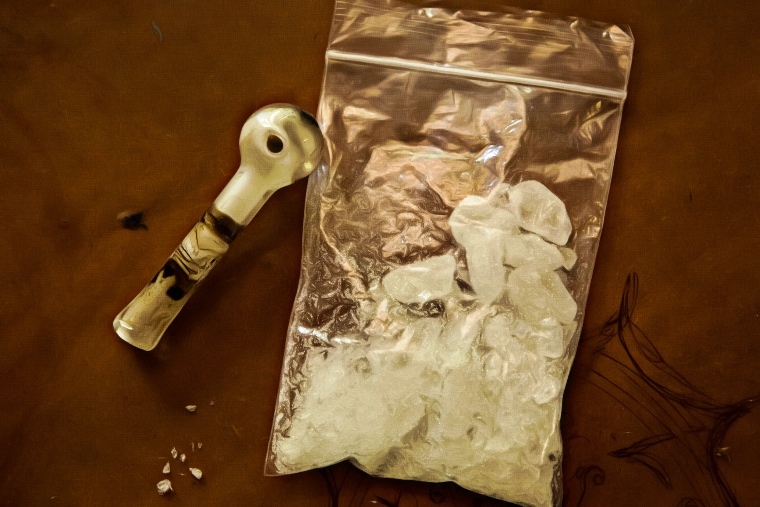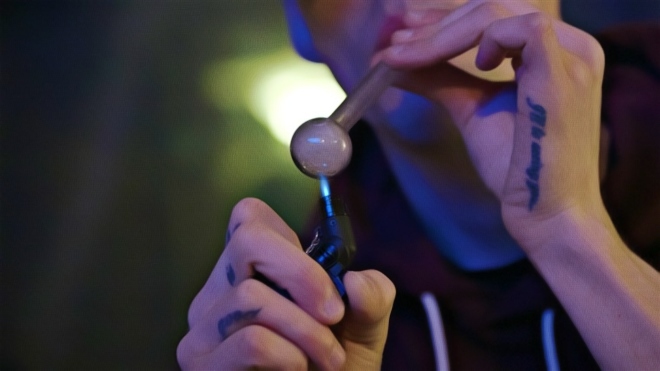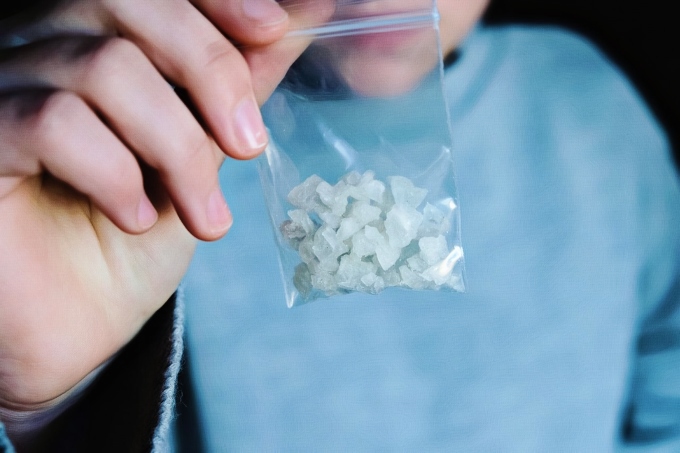How Long Does Crystal Meth Stay in Your System?
Since it is a highly purified form of the same drug, crystal meth remains in your system for the same length of time, with the same general elimination half life and urine toxicology detection. It is important to note that crystal meth is often laced with fentanyl, a highly addictive opioid that is white and odorless like crystal meth, and can easily cause an overdose or death.
What is Meth?
Methamphetamine, also known as meth, crystal meth, blue, and ice is a recently developed drug derived from amphetamine. When it was initially introduced, methamphetamine was incorporated into respiratory drugs such as inhalers and decongestants. It is classified by the U.S. Drug Enforcement Administration (DEA) as a Schedule II stimulant. Although medical professionals may rarely prescribe methamphetamine for ADHD and weight-loss treatments, it can only be prescribed legally with a non-refillable prescription. Due to its extremely addictive nature, doctors tend to avoid prescribing meth, and will choose alternatives that are safer for the patient.
Meth’s addictive nature stems from its effect on the central nervous system. It is a stimulant similar to cocaine and amphetamines. Users typically experience euphoria, increased energy levels, and decreased appetite. However, meth has a stronger effect on the brain than other stimulants, which heightens the euphoria and activity while also increasing the harmful effects of the drug on the user’s central nervous system.
What Does Meth Look Like?
Meth is a white crystalline powder with a bitter flavor. It dissolves easily in water or alcohol, and can be purified in conversion laboratories into crystal meth, a more potent version of meth that is sold illegally. It can be dissolved into liquid form for injection, smoked in a glass pipe, or snorted. Meth by prescription often comes in tablets, and a pressed crystal meth pill has also recently appeared on the illegal drug market.

What Does Meth Smell Like?
While methamphetamine is largely odorless the manufacturing process that derives crystal meth from a cocktail of over the counter drugs such as pseudoephedrine does create a distinctive sweet or ammoniac chemical burning smell. Once the conversion is complete, the resultant crystal meth is odorless, with a bitter flavor.
How Long Does Meth Stay in Your System?
Meth is less affected by the user’s metabolism than other stimulants, so it can remain in the body much longer. This results in a much longer period of stimulation and euphoria that can last from 8 to 24 hours. The time until onset of euphoria and stimulation depends on the way that the drug is administered. When injected, the onset occurs within a few minutes, while ingested methamphetamine can take 2-4 hours to reach peak concentration. The length of time that meth affects the brain of the user is heavily dependent upon the dosage, how it was taken, the health and body chemistry of the user, and the time of day it was taken. The drug exhibits an elimination half life of 6-15 hours, which means that the amount of meth in the blood is reduced to half of the peak amount within 6-15 hours. The drug is eliminated in urine, and can be detected in urine toxicology screenings for up to 4 days after use.
Signs of Meth Use
If you suspect that someone you know may be using meth, it is important to ensure that they receive treatment as soon as possible. Meth is highly addictive, and is often cut with other drugs that make it even more dangerous. When looking for potential meth use, watch for the following behaviors:
- Increased attention and wakefulness
- Reduced appetite
- Euphoria
- Faster breathing and irregular heartbeat
- Hyperthermia

If someone has been using meth for a longer period of time, the signs may become more severe, and include:
- Addictive behavior
- Extreme mood swings from “binge and crash” behavior
- Psychosis, paranoia, delusions, and hallucinations
- Tics or repetitive motions
- Greater distractibility
- Reduced thinking skills and memory loss
- Loss of coordination and motor skills
- Moody, violent, or aggressive behavior
- Extreme weight loss
- Deterioration of dental health
You can sometimes identify meth misuse by behavioral changes, especially sleep patterns. Users often take meth in a binge-and-crash pattern in which they maintain a high for several days before crashing in exhaustion. When using, individuals will often forego food and sleep in favor of continuous use. Because it is a strong stimulant, users may display active and euphoric behavior, but could also exhibit violent or aggressive mood swings, hallucinations, or psychotic episodes.
Meth Overdose
The euphoria produced by methamphetamine lasts for a shorter period of time than its stimulating properties. Users will therefore continue to increase their dosage in order to maintain the “high” feeling longer. Because meth is a very strong stimulant, it strongly affects the cardiovascular system, and can cause rapid and irregular heart rate and high blood pressure. Users who continue to regularly take meth or increase their dosage may be at risk of a stroke or heart attack. Hyperthermia, or heightened body temperature, and brain damage are other significant risks of meth use, and can result in convulsions and even death. Because meth is often cut with other substances such as fentanyl, the symptoms of an overdose can vary widely.
The following behaviors and symptoms are consistent with a meth overdose and require immediate treatment:
- Irregular and elevated heartbeat
- Chest pains
- Blood pressure fluctuations
- Difficulty breathing
- Extreme agitation or violence
- Psychosis, delusions, or hallucinations
- Hyperthermia
- Convulsions
- Unresponsive
If you see someone exhibiting any of these signs, call 911 or call the Poison Help line toll free from any number in the U.S. at 1-888-222-1222. A meth overdose can be reversed, and meth addiction can be treated. It is, however, critical that the individual receive help as quickly as possible. If the overdose victim is experiencing convulsions or is unresponsive, be sure that they are lying on their side, so that they do not vomit and asphyxiate. Do not try to restrain an individual who is seizing. Instead keep their head and limbs from hitting any objects, in order to prevent any further injury.
Victims in the hospital will be dosed with activated charcoal and a variety of drugs to clear their system. Once the victim has recovered from the physical effects of a meth overdose, there are effective treatments that can help users recover from methamphetamine use and addiction. Cognitive behavioral therapy and contingency management have been proven to help users to overcome addictive behaviors during rehab.
Sources:
https://www.drugabuse.gov/publications/research-reports/methamphetamine/what-methamphetamine
https://www.ncbi.nlm.nih.gov/books/NBK430895/
https://www.drugabuse.gov/drug-topics/fentanyl
















